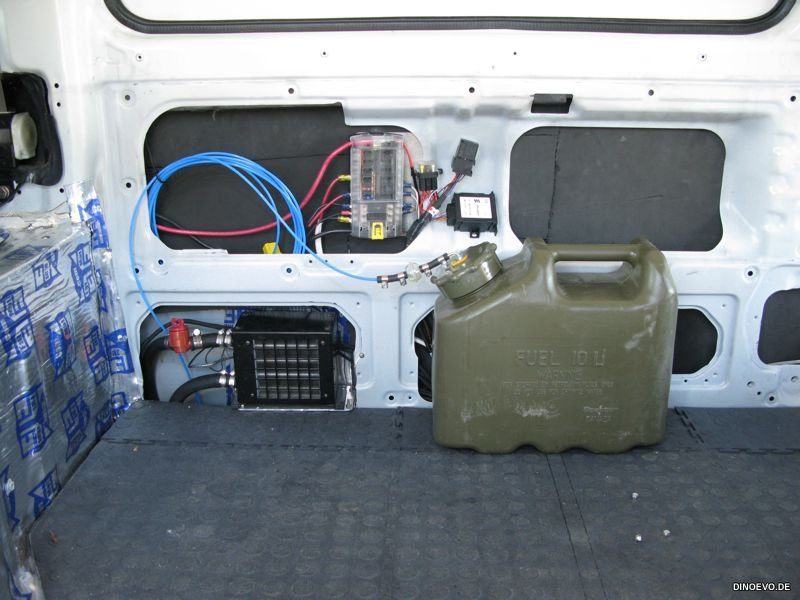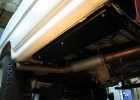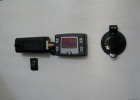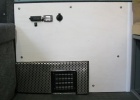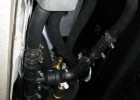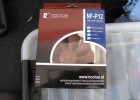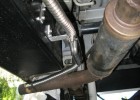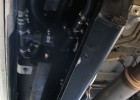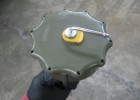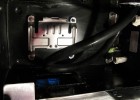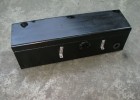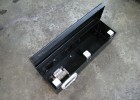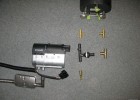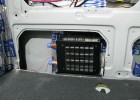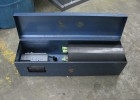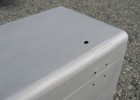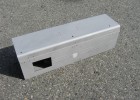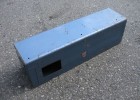Diesel Heater & Hot Water Tank

Having an auxiliary heating system with a hot water option was a high priority for us. Specially on longer trips in colder regions, a warm shower and warm interior makes a huge difference for you personal comfort.
There are many different ways of heating air/water in an RV. For us a Diesel powered coolant heater from Espar (Hydronic D 4 W SC) made the most sense for a few reasons. First its very compact as space is limited, second you only have to have one single source of fuel on board and third you can preheat your Diesel engine on very cold days. The reason for an Espar vs. Webasto is the better availability of spare parts worldwide as well as the possibility to run the heater over a longer period of time in high elevation (over 1500m above sea level – with special fuel pump sensor) which we are going to have a lot during our time in the Andes.
Finding the hot fresh water tank was a challenge as most of the RV or marine tanks in North America are way to big for the limited space we have available. I was close to get a custom tank made, but we finally found the perfect size at the Overland Expo in Germany. Elgena – an established company from Munich – offers all kinds of stainless steel water heaters in smaller sizes. We bought the Nautic-Junior M with 10 litre capacity.
After getting all the parts together, we had to find a space to mount them. Most sense made for us to take the rear air-condition and heater core out (front AC is still working) and build a box for everything. After months looking through ads on Craigslist I found an old toolbox with almost the exact measurements we need. I sandblasted the box and gave it a few coats of paint and mounted all the brackets. The big opening on the side of the tool box matches up with one of the openings of the old rear heater. So all the cables and hoses are going up to the cab this way.
Next step was to mount a new heater core inside the van. I found a small auxiliary heater core at Princess Auto. The quality (and noise) of the 120mm computer fan mounted on the back of the core was not the best, so I upgraded it with an ultra-silent fan and installed RPM dial switch to make it even more quite. Right above the Diesel heater was a big enough spot behind the side panels to mount the heater core.
The fuel pickup of the Diesel heater is connected to a Scepter military fuel can inside the van for two reasons. First, I still want to be able to mix WVO on warm summer days into the engine fuel tank and second on really cold days – when you actually need the heater most – the Diesel won’t gel up in the warm cab.
The plumbing inside the box was very tricky and time consuming. I wish there was more space as there are a tons of hoses going back and forth. The system is set-up in way that the fresh water tank gets even heated with just the engine coolant alone. So basically when we drive around and come to a campsite, the water is already hot. The same is with the rear heater core. It also works without the Diesel heater. Only if we are camping for several days at the same spot or for cold nights we need to use the Espar.
A schematic overview of our system:

Coolant is coming from the engine to a temperature sensitive valve (1). It goes than to the Espar (2) and gets heated up. Hot coolant is going to the Elgena hot water tank (3) and heats up the water. After that it goes to the auxiliary heater core (4) inside the cab. Than coolant is going back. Now the valve (1) comes into play again. Initially, up to a cooling water temperature of approx 67 °C, the heat from the Espar is only fed to the heat exchanger and hot water tank – inside of the vehicle and water heats up fast. From a cooling water temperature of around 67 °C, part of the heater’s heat is also fed to the Delica’s engine. This slowly heats the engine circuit, without causing the “small cooling water circuit” to rapidly cool down.
So far everything is running how it should, but we still need to extensive test the entire system as well as hook up the fresh water tank.

